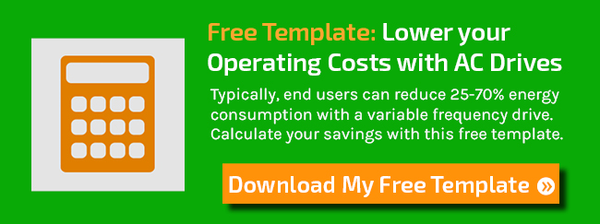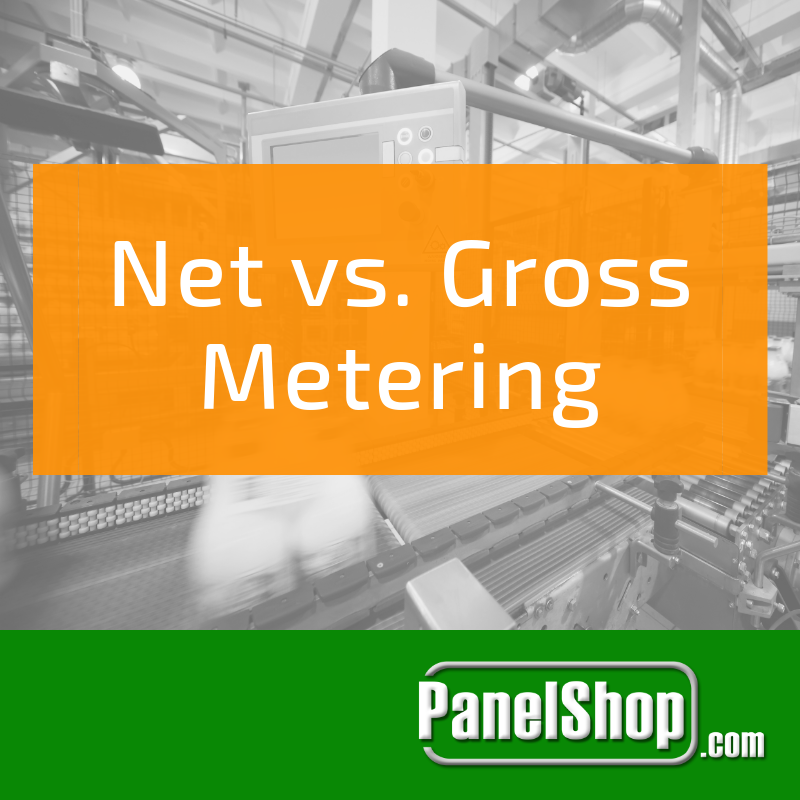The first electrical AC motor was designed in 1899 to convert electric energy into mechanical energy by electromagnetic induction. Electrical motors are characterized by fixed speed and fixed torque, which is not suitable for all processes. According to the International Energy Agency (IEA), industries consume about 42% of all electricity generated, and motor-driven applications account for 70% of that. More than 90% of industrial motors cannot adjust their power consumption, with many running at full speed regardless of the actual output it needs.
When speed control is necessary, a variable speed AC Drive is the best solution because it allows you to control the motor speed so that it can be ramped up, down, or continuous.
For example, AC drives can be used to control the airflow of a fan for large heating and air conditioning systems, or the flow of water and chemicals in industrial processes. AC drives can also be used in more complex situations like wastewater processing, paper mills, oil drilling platforms, or even mining.
In a recent article, we talked about how variable frequency drives can save energy, but exactly how much can you expect to save? Typically, end users can expect 25-70% reduction in energy consumption versus standalone AC motor energy consumption.
Affinity Laws
Energy savings at lower motor speeds can be realized based on the Affinity laws:
- Flow= f (motor speed)
- Pressure= f (motor speed)²
- Horsepower= f (motor speed)³

According to the Affinity Laws, lower motor speed equals less energy consumption. For example, a motor running at 80% full speed requires 51% of the electricity of a motor running at 100% speed. (.8 x .8 x .8 = .512).
Cost Savings Example
Download the free Excel Cost Savings Template here to follow along and calculate your cost savings.
Let's say we have a fan with a 30 horsepower motor that supplies air:- 10 hours a day
- 250 days a year
- Energy cost is $0.0696 cents per kilowatt-hour (source)
The cost of running a 30 hp motor full speed for 10 hours per day:
30 hp x 0.746 kW/hp x 2500 hours x $0.0696/kWhr = $3,894.12 per year
Assuming the fan does not run at full speed all day, we'll break down our fan speed:- The fan operates at 100% speed for 30% of the day
- The fan operates at 75% speed for 55% of the day
- The fan operates at 50 % speed for 15% of the day
- 30 hp x (1)³ x 0.746 kW/hp x 750 hours x $0.0696/kWhr = $1,168.24 per year
- 30 hp x (.75)³ x 0.746 kW/hp x 1375 hours x $0.0696/kWhr = $301.19 per year
- 30 hp x (.5)³ x 0.746 kW/hp x 375 hours x $0.0696/kWhr = $608.46 per year
So the total cost of running with an AC Drive is: $2,077.88 per year
Annual Savings
$3,894.12 - $2,077.88 = $1,816.24 savings per year running with an AC Drive
Payback period:
To calculate the payback period of investing in an AC Drive, use:
(Cost of drive/annual savings) x 12
For example: If our 30hp Drive cost $2,800, the payback period would be 18 months. Less than 2 years!





